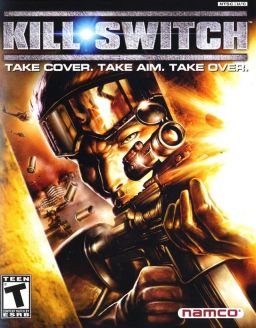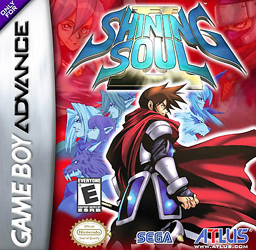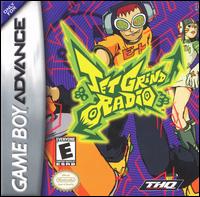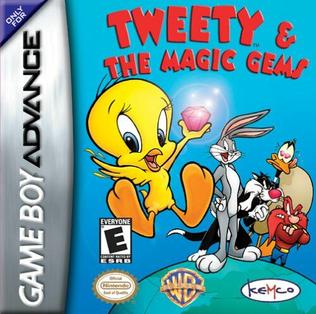
WarioWare: Twisted! is a video game for the Game Boy Advance, developed by Nintendo SPD with Intelligent Systems and published by Nintendo. It was released on October 14, 2004 in Japan; May 19, 2005 in Australia; and May 23, 2005 in North America. The third game in the WarioWare series and the seventh in the Wario series overall, Twisted! was the last Wario game to be released on a Game Boy family system.

I-Ninja is a platform video game developed by Argonaut Games for the PlayStation 2. Versions for GameCube, Xbox and Microsoft Windows were released later, with Namco Hometek releasing the game in North America. A Game Boy Advance version of the game was announced, then later cancelled.

Midnight Club: Street Racing is a 2000 racing video game developed by Angel Studios and published by Rockstar Games. The game focuses on competitive street racing and the import scene. Two distinct versions of the game were released for the PlayStation 2 and Game Boy Advance platforms, the former being a launch title for the platform. It is the first game in Midnight Club franchise, followed by Midnight Club II.

Kill Switch is a third-person shooter video game developed and published by Namco Hometek for the PlayStation 2 and Xbox. A port for Microsoft Windows was released in 2004 while an abridged Game Boy Advance port developed by Visual Impact was released the same year. The PAL release of the PS2 port came with a demo of SOCOM II U.S. Navy SEALs on a separate disc, as Sony Computer Entertainment released the game in Europe.

Shining Soul II is an action role-playing game for the Game Boy Advance. It was developed by Grasshopper Manufacture, as the sequel to Shining Soul and part of the Shining series. The game was originally scheduled to be released on Fabruary 24, 2004, before it was delayed by two months.

Ecks vs. Sever is a first-person shooter video game for the Game Boy Advance handheld game console. It was developed by Crawfish Interactive and released in November 2001. The game is based on an early script of the 2002 film Ballistic: Ecks vs. Sever, and is the first video game released before the film it is based on had even begun production. The sequel Ballistic: Ecks vs. Sever was released within a week of the film and follows its plot line more closely than the first game does.

Sheep is a strategy puzzle video game released for PlayStation, Microsoft Windows and Game Boy Advance. In 2001 it was released for Mac OS X by Feral Interactive. The Game Boy Advance version was released in March 2002 in the EU, while the intended North American release was cancelled for unknown reasons.

Dave Mirra Freestyle BMX 2 is a 2001 BMX video game developed by Z-Axis and published by Acclaim Entertainment under their Acclaim Max Sports label. It is the sequel to Dave Mirra Freestyle BMX. It was released for the PlayStation 2 in August 2001, and in the following months it was ported to the GameCube, Game Boy Advance, and Xbox video game systems. Both the GameCube and Xbox ports featured two extra levels that were not present in the PS2 version.

Mission: Impossible – Operation Surma is an action-adventure stealth video game developed by Paradigm Entertainment and published by Atari for Game Boy Advance, Xbox, PlayStation 2 and GameCube. The game takes place between Mission: Impossible 2 and Mission: Impossible III.

NHL Hitz 2003 is an ice hockey video game published by Midway Sports. One version was developed by Black Box Games and released on the Xbox, PlayStation 2, GameCube in 2002. The other was developed by Exient Entertainment and released on the Game Boy Advance. It is the second game of the NHL Hitz series. The Game Boy Advance version can be linked with up to three other systems for four-player play.

GT Advance Championship Racing, known in Japan as Advance GTA, is a racing game developed by MTO and published by THQ. It was a launch title for the Game Boy Advance. The game's sequel, GT Advance 2: Rally Racing, was released on June 30, 2002, in North America.

Teenage Mutant Ninja Turtles is a 2003 beat 'em up game developed and published by Konami for the Game Boy Advance, and based on the 2003 TV series. In this game, each turtle has his own unique set of levels to complete. In addition to the traditional side-scrolling levels, there are third-person view races, a shell-glider level for Donatello and a bike race between Raphael and Casey Jones. The game was also issued in a double pack with its sequel Teenage Mutant Ninja Turtles 2: Battle Nexus.

Disney's Extreme Skate Adventure is a 2003 skateboarding game published by Activision and developed by Toys for Bob for the PlayStation 2, GameCube, and Xbox, and Vicarious Visions for the Game Boy Advance, and published by Activision. The game features characters and stages licensed from Disney's The Lion King and Tarzan, and Pixar's Toy Story.

Mat Hoffman's Pro BMX is a 2001 BMX video game developed by Shaba Games and the first game to be published by Activision under the Activision O2 label. It is similar to the Tony Hawk's series and competed directly with Acclaim Entertainment's Dave Mirra Freestyle BMX. Despite a planned release in fall of 2000, the game was released in 2001 for the PlayStation and Game Boy Color, followed by Dreamcast, Microsoft Windows and Game Boy Advance. The PlayStation and Dreamcast versions received "favorable" reviews, while the PC and Game Boy Advance versions received "average" reviews. A sequel, Mat Hoffman's Pro BMX 2, was released in 2002.

Teenage Mutant Ninja Turtles 2: Battle Nexus is a 2004 beat 'em up game developed and published by Konami. It is the sequel to Teenage Mutant Ninja Turtles and is based on the 2003 TV series.

Terminator 3: Rise of the Machines is a 2003 first-person shooter video game based on the film of the same title, with elements of hand-to-hand combat in the third-person perspective. It was developed by Black Ops Entertainment, with assistance work done by other Atari-owned subsidiaries. The game was published by Atari for PlayStation 2 and Xbox in 2003. An isometric shooter version was released for the Game Boy Advance during the same year. The game was also going to be released for GameCube, but was eventually cancelled.

Jet Grind Radio is a video game for the Game Boy Advance system, which is based on the Dreamcast title Jet Set Radio. The game was developed by Vicarious Visions and published by THQ.

Tweety and the Magic Gems, known in Japan as Tweety's Hearty Party, is a party video game developed by Kotobuki System and published by Kemco in 2001 for Game Boy Advance. The game was available at the launch of the console.

The Sims 2 is a 2005 life simulation video game developed by Amaze Entertainment and published by Electronic Arts for the Game Boy Advance (GBA). Development of the game began following the success of The Sims 2 for personal computers. The GBA version differs significantly from the original version, being a game with linear progression in the style of a reality show and 2D isometric graphics.



















